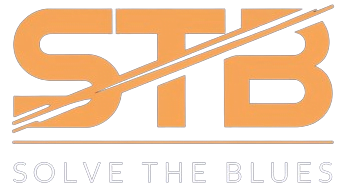Transcranial Magnetic Stimulation (TMS), a non-invasive method to facilitate or suppress neuronal activity in the human brain, has emerged as one of the potential tools in the broader therapeutic area of neurorehabilitation. The mechanism involves generating a rapidly changing magnetic field, which crosses the skull and interacts with neuronal circuits, thereby influencing cognitive and sensorimotor functions.
Through its safe and efficient neuro-modulatory effects, TMS has been extensively explored for its potential applications in numerous neurological and psychiatric disorders including stroke, Alzheimer’s disease, Parkinson’s disease, depression, and others. In neurorehabilitation, TMS holds tremendous promise in understanding brain-behavior relationships, help elucidate the neural mechanisms underlying recovery, and plan innovative therapeutic strategies for functional restoration.
Role of TMS in Neurorehabilitation
Neurological disorders often result in the loss of neural connectivity, which leads to functional impairment. The role of neurorehabilitation is to promote restitution and functional recovery by leveraging the brain’s ability for neuroplasticity. TMS, with its potential to modulate neural circuits, can serve as an adjuvant tool to promote neuroplastic changes, thus improving the outcomes in neurorehabilitation.
One of the key challenges in neurorehabilitation is the lack of objective measures to assess the neural changes following therapeutic interventions. TMS offers a unique solution to this by providing objective and quantifiable measures of cortical excitability and connectivity. It also enables clinicians to track the progress during rehabilitation and modify therapeutic strategies accordingly.
Use of TMS in Stroke Rehabilitation
In stroke rehabilitation, TMS is primarily used to facilitate recovery of motor function. Post-stroke, there is often an imbalance between the excitatory and inhibitory influences that govern the motor networks. TMS, by modifying the cortical excitability, can help restore this balance, thereby leading to improved motor function.
Use of TMS in Parkinson’s Disease Rehabilitation
In patients with Parkinson’s disease, TMS has been shown to reduce motor symptoms by modulating the cortical excitability and cerebro-cerebellar connectivity. TMS combined with concurrent physiotherapy can potentially enhance the rehabilitation outcomes by inducing plastic changes in the neural circuits.
Benefits and Limitations of TMS in Neurorehabilitation
The benefits of TMS in neurorehabilitation are multifold. It is a non-invasive and safe procedure that allows for targeted intervention, enabling clinicians to tailor the therapy based on individual patient’s needs. However, there are certain limitations. Getting optimal results from TMS requires precise targeting, which relies heavily on the clinician’s expertise and understanding of patient’s neural circuits. Adherence to the protocol is a must for obtaining reliable and consistent results.
Conclusion
In conclusion, TMS has immense potential in the field of neurorehabilitation. With continued advances in TMS technology and its integration with other modalities like neuro-imaging and neuro-navigation, individualized and targeted therapy becomes a reality. Frequent and precise dose adjustments enable clinicians to optimize therapeutic gains and mitigate any potential risks. Moreover, as more and more research studies shed light on the various aspects of TMS in neurorehabilitation, its widespread adoption becomes increasingly realistic.
Frequently Asked Questions
Q: What is Transcranial Magnetic Stimulation?
A: Transcranial Magnetic Stimulation (TMS) is a non-invasive method used to stimulate small regions of the brain.
Q: How does TMS work?
A: TMS works by delivering a magnetic field to specific parts of the brain to either stimulate or suppress brain activity.
Q: Is TMS safe?
A: Yes, TMS is typically considered safe, but like any medical procedure, it may have potential side effects. These could include discomfort at the site of stimulation, lightheadedness, and rare instances of seizures.
Q: How is TMS used in neurorehabilitation?
A: TMS is used in neurorehabilitation as a therapeutic tool to facilitate recovery from different neurological conditions. It does this by stimulating neural circuits, thereby enhancing the brain’s natural ability for neuroplasticity and functional recovery.
Q: Can TMS cure neurological disorders?
A: TMS is not a cure for neurological disorders. Instead, it is a tool that can be used to aid in the recovery process and help minimize the symptoms of these conditions.
